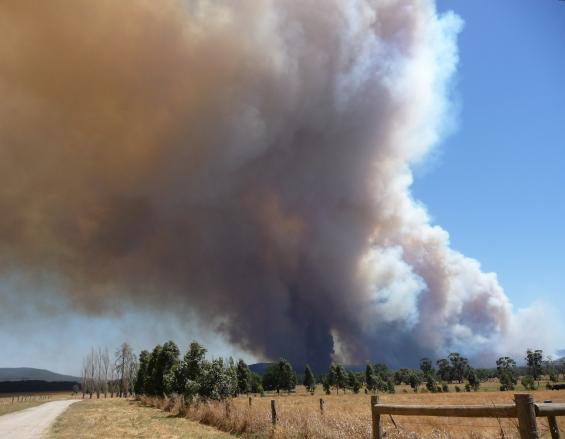Fears and myths in fire law

This article appeared in the Summer 2013 edition of Fire Australia magazine.
Since the Victorian Bushfires Royal Commission, litigation due to damage caused by bushfires has come into the spotlight. But just how common is bushfire litigation? A Bushfire CRC researcher has delved into the legal archives and produced a valuable resource.
One of the desired outcomes of the Bushfire CRC Project, titled Mainstreaming Fire and Emergency Management Across Legal and Policy Sectors: Joint Research and Policy Learning, was to understand the real risk of legal litigation.
Researcher Dr Michael Eburn explained. “Volunteers in particular report they are afraid they may be liable for their actions and people report that there is a tendency to sue over events that, in earlier times, were accepted as part of the risk of living in the bush. We wanted to know if any of those fears and beliefs were justified by the historical record.”
In an Australian first, Dr Eburn reviewed the history of litigation seeking compensation for causing, or failing to extinguish, a bushfire. The results, as a useful table on the Bushfire CRC website, may be surprising to some.
“Litigation over bushfires is not, as many people say, a new phenomenon,” said Dr Eburn.
“People have being suing over bushfires for well over 100 years. Although litigation against the fire and land management agencies is new, it is not common, and it only arises after catastrophic events, not day- to-day or routine events. So far, fire agencies have not been held liable for their well-intentioned actions.
“Our research located 87 judicial decisions, arising from 71 cases from 1868 to 2010. Litigation arose from fires in only 48 out of those 143 years, even though, based on the assumption that bushfire frequency has remained constant over the last century, there may have been in excess of 5 million fires in that period.”
While undertaking this research, Dr Eburn identified cases dealing with legal liability for causing or allowing a fire to spread. He also identified claims alleging negligence in training firefighters, the right to criminal injuries compensation for fires started by arson, the jurisdiction and role of the coroner, the spread of urban fires, the interpretation of insurance policies relating to fire, liability for accidents involving fire appliances and the application of planning law to fire-prone areas.
While all of these areas are important to fire agencies, the research, and the case analysis available on the Bushfire CRC website and published in papers, was concerned with liability for starting or failing to extinguish a bushfire. The cases were taken from courts all across Australia.
The outcomes of this research are available for all in an easy-to-use format on the Bushfire CRC website. Dr Eburn has summarised the facts of each case, the findings and, where possible, if the case was won by the defendant or the plaintiff. Many recent cases are not yet resolved.
More information on this project is available on the project webpage.
A recent Fire Note analysing fire and emergency law by Dr Eburn and fellow Bushfire CRC and Australian National University researcher Professor Stephen Dovers is available here.
Additionally, Dr Eburn and Professor Dovers have co-authored a paper that appears in the International Journal of Wildland Fire. This paper not only looks at the cases that came before the court, but, with the support of the NSW Rural Fire Service (RFS), extends the research to look at claims that were made against the RFS but were settled out of court.
Note: The research gives some idea of the issues that were resolved by the court but they cannot be relied on to give a full understanding of the law. No one should rely on the online material or the analysis of any particular case to guide judgements. If it is necessary to understand the legal position governing any action or likely to apply after any event, then it is necessary to seek, and obtain, competent legal advice.
FOR MORE INFO ...
-
Researcher


